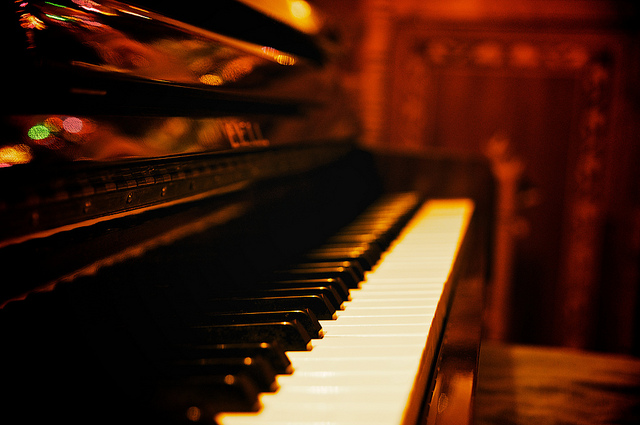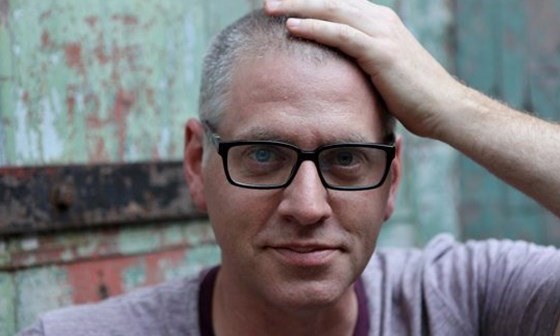Speakers
Like anyone else, our music columnist needs a good reason to get off the couch and go out. He offers some requisites that'll lure him to a live show: keep the canned music off, turn down the mic and, for the love of god, play a real piano.


I NEED A REASON TO GO OUT FOR MUSIC THESE DAYS – there’s got to be something about the show beyond the run-of-the-mill. I have spent my life with live music, in clubs, concert hall, and living rooms, and as I have gotten older, I am more particular about both the music and the experience. I say that, knowing full well it’s all too easy to glorify the past. Its easy to dream of a time when Bob Dylan, Thelonious Monk, Woody Allen, Bill Cosby, Mort Sahl, et al were working within spitting distance of one another (sometimes on the same bill). And it didn’t even have to be a special occasion — just a Saturday.
But as art and entertainment has increasingly become monetized, marketed, and therefore segmented by target demographics, our entertainment experiences are mostly controlled to maximize those values, pre-packaged and known-in-advance. It’s just what happened. Of course, as a social or economic principle, low risk comes with high cost. It doesn’t matter whether we are talking about car insurance or The Lion King. Certainty is expensive. In other words, to avoid taking a risk on a little-known play or concert, we go for the sure thing, the ready hit.
At the same time, our homes became the center of entertainment. From network television to cable to VHS to DVDs to Netflix, not to mention cassette tapes, CDs, iTunes and Spotify — we’ve been marching toward ever-more personalized, algorithmically-guaranteed cultural experiences. All that abundance of art, picked for you with your previous purchase history in mind, ready and waiting on demand from the comfort and privacy of your own sofa.
Whether the past was some sort of golden age of live entertainment or not, getting people out of their cramped, hot, isolating hovels is easier than getting them to leave an air conditioned, flat-paneled WiFi-ed palace. (It is one of the things I miss about New York. Despite all the technologies in place, New York is still very much a mid-century city, and all but the super-wealthy still live in hot and cramped spaces. So, the idea of going out for culture is still pretty compelling.) Despite all this, live music soldiers on and, sometimes, even thrives. And really, at the most basic level, even what gets piped into our homes often starts life out there, in the dirty, risky world.
I often wonder where all the content is going to come from if the arts continue to be an afterthought in our culture, but that is a topic for another situation. It survives, yes, but there is greater pressure than ever on to make the work special, something beyond what’s available on a day-to-day basis that will justify the trip.
Like I said at the beginning — I’m no different. I need a good reason to go out, the promise of some singular experience. And for me, that’s a tall order born of two-plus decades going to concerts, clubs, living rooms, and basements to hear and play music. My own list of requisites comes from hours logged on bar stools, hard chairs and standing in crowded clubs, or trying to find room for my elbow because the person to my right leans considerably to the left. I know what it is to try to focus on Ravel even though the person in front of me is threatening to asphyxiate us all with Eternity, Polo Sport, Axe or sandalwood. And I’m here to tell you it’s all worth it when the moment of performance is transcendent. It’s more than worth it.
But it’s so easy to miss that mark. Too often, the highs are turned up and the saxophone comes through speakers with the hiss of late summer cicadas; or the drums are mic-ed up, even in a small room. Does anyone think drums aren’t loud enough? And why is the saxophone, or god forbid a trumpet, on mic at all? Sometimes, I am playing and the sound guy chases me around every time I play quietly, as if dynamics were a bad thing. When did we decide all music should be mixed like a Beyoncé or Mumford and Sons record destined to be heard through 50-cent ear buds at a spinning class? Another point: A digital piano or electronic keyboard is not a piano, and it never will be. I am not saying they are always bad, nor am I saying that there isn’t music that’s best served by their use. But a real piano is a one-of-a-kind instrument, and if the “piano” you’re playing is digital, I would rather stay home. (What’s more: music venues should always make a piano available, or at least a Rhodes.)
______________________________________________________
If I’m coming to a live show, I want to feel the vibration of instruments and real voices, not just air moved by speaker stacks.
______________________________________________________
If I’m coming to a live show, I want to feel the vibration of instruments and real voices, not just air moved by speaker stacks. (It goes without saying, but I am talking about acoustic music through speakers, here, and not music that only exists with amplification.)
So, let’s assume that everything is going well: the sound mix is good, or better yet, the amplification is minimal (maybe just for the voice, or for a little support on the piano and bass). And let’s assume the music is great, beautifully played. Transcendent. It happens, and fairly frequently. For me, even a great listening experience can be tarnished when, hardly a second after the cymbal has stopped ringing, the house system is fired up with recorded music (usually loudly). The canned audio leads to lots of loud talking (shouting, really), and there you have it: all the magic of that live musical vibration is banished from the room, lost to the din of speakers and chatter.
It’s a little like finishing a fine meal and having the waiter come over and shove a burger in your mouth. It doesn’t matter how good the burger is, you want some time with what you just ate. Plus, I have speakers at home, and they’re good. I can listen to The Meters or John Coltrane there without the thick sound of the bar crowd; nothing sounds louder than the human voice after a show.
I dream of a room with a piano, no speakers, featuring shows of all kinds of music — classical, folk, jazz. A place where the transcendent experience of live musical vibration is treated like the singular moment it is. Where audience and performer can commune and savor, and digest what they’ve heard without undue interruption.
I would go out for that. All the time.
And the thing is such an idyll does exist, at least until the end of December. The Artists’ Quarter comes very close: the sound is good and people are there to listen. And the Black Dog in St. Paul is that kind of place, too: it’s an acoustic space with all kinds of music on offer. Combine sets at those two with an evening at the SPCO and you have the possibility for a truly transcendent night.
I know. I am grouchy and particular. But it’s my time and money, so I have the right to be. If you love loud sound systems and loud chatter, great. It’s your money and time, and the good news is you can find that in dozens of places every night of the week. Hell, you will probably even see me there sometimes.
But not often.
______________________________________________________
About the author: Jeremy Walker is a composer/pianist based in Minneapolis. He has performed with Matt Wilson, Vincent Gardner, Wessell Anderson, Marcus Printup, Ted Nash, Anthony Cox, and other notable musicians. Jeremy was the owner of the club, Brilliant Corners, and co-founder of Jazz is NOW!. Walker teaches piano at K and S Conservatory in Woodbury, MN. His current projects include works involving opera, film — scoring “Photographic Justice: The Corky Lee Story” – and a new jazz ensemble with solo voice and choir, 7 Psalms. Walker also authors a series of articles on culture for Walker Art Center and mnartists.org.